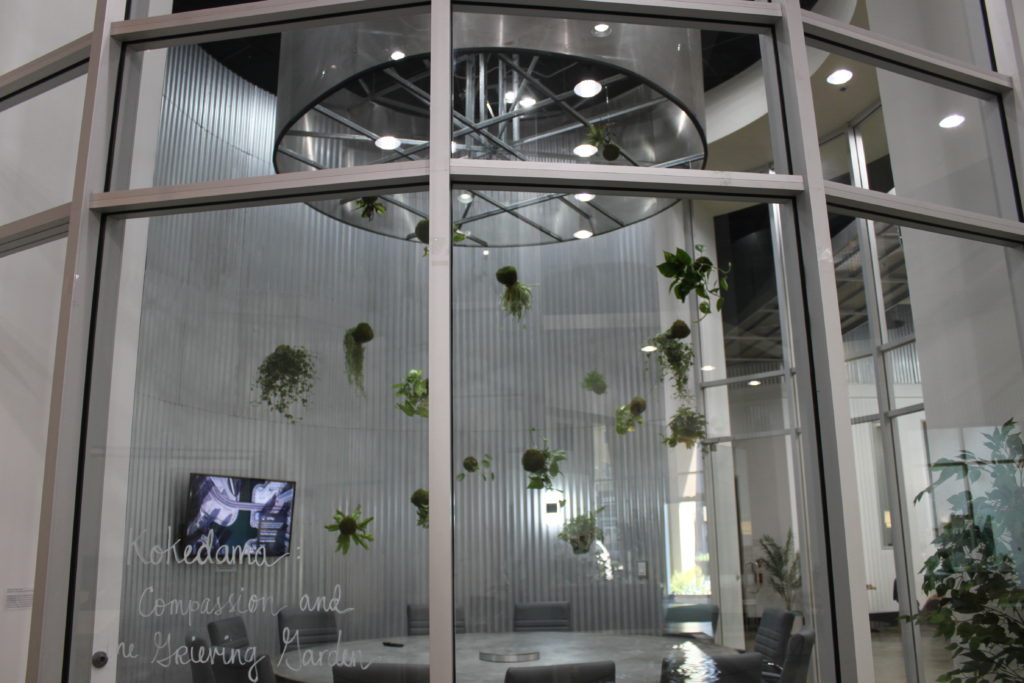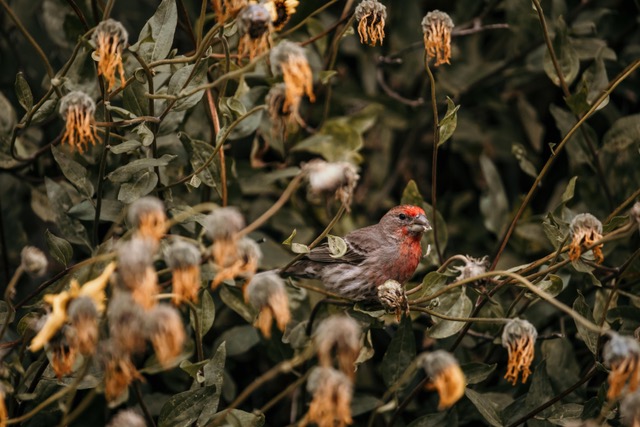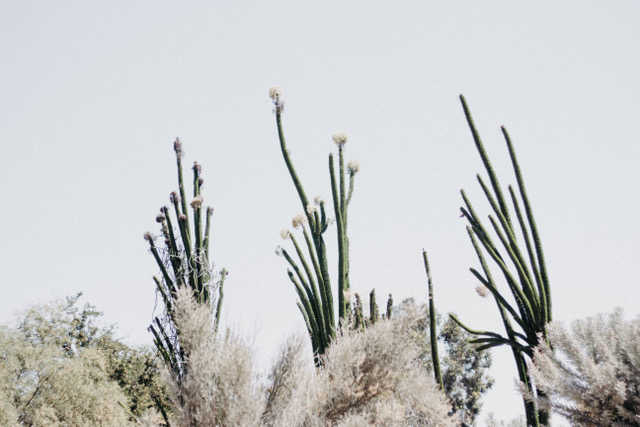Bright green floating foliage delicately sways and flutters with each passing body in the metal and glass shrine of the WorkWell space. High above the touch of human hands, these self-contained plant bodies hover and dance in place while inspiring onlookers to dream and wonder at the magic and memory they seem to contain. This installation is one of the many works currently on view at Irvine’s coworking space, WorkWell, that encourages imagination and personal reflection with the exhibition “Idiosyncrasies.”
Put together by Rue Rue Life and Aquila Projects, this contemporary art exhibition explores the concept, construction and representation of memory through four artists’ artworks. With two painters, one photographer and one installation artist, the works on view retain approachability for a variety of audiences. The works on view engage with the expression of memory using relatable visual language components that allow viewers to interpret the imagery and composition into something personally meaningful to them.
Walking into “Idiosyncrasies,” it is difficult to see any art at first. This coworking space is filled with beautiful architecture, water features, plant life and energetic groupings of people in different nooks around the space, the art takes a backseat. There is no specified space for WorkWell’s Gallery, so you have to hunt down the sparse wall space to find the art in their regular exhibitions.

(Evan Senn)
The first piece you see is a collection of paper works by Ali Sabet that recall the figurative scribblings of Willem DeKooning — quick, chaotic, female figure-centered, and infused with energy. Placed on a large wall near the entrance to WorkWell, the grid of eight mostly-black brush paintings on white paper are playful, lively and inviting, setting an approachable yet ambiguous tone for the rest of the exhibition. The content of these sketchy painted drawings ranges from generic female figures and body parts to birds to abstract scribbles and compositions.
Turning a corner from Sabet’s first installation, you find the dark and enigmatic paintings of Reza Saleh scattered throughout the large communal work area. Saleh’s paintings are sleek and graphic figurative designs that resemble the kings and queens of playing cards. Through his paintings, he creates a fascinating bridge between the traditional visuals of Iranian calligraphy, figurative cubism and contemporary graphic design.

(Evan Senn)
Focusing on a rich color pallet and playing with paint opacity and metallic finishes, Saleh is able to provide a unique experience for viewers, aiding them to recall their own memories — whether it be through playing cards, art history, cultural exploration, material memory or through that of the figures he has created. These fascinating figurative paintings are evocative and nuanced, providing a beautiful and complex art experience in a surprising space.
On the opposite side of the WorkWell space, there are small offices, sitting areas, conference rooms, and a communal kitchen — this area is difficult to navigate when looking for art. The wall spaces are narrow and the work that is able to fit on these walls is small in comparison to the space and visible amenities. Between the offices, however, you can find breathtaking framed photographs by artist Faye Gedik. The nature photographs are close-ups of seemingly magical moments in nature — a single wild flower with perfect natural light, a bright red bird nestled in decaying flowers, the natural exactitude of a close-up of a blooming succulent, or a hummingbird feeding of a flower in mid-flight. The photographs are smaller than they feel, but the imagery is inspiring and picturesque.

(Jasmin Pannier)
In the rounded glass conference room at WorkWell, there is an intriguing installation called “Kokedama: Compassion and the Grieving Garden,” made by Fibers and Florals that seems to blend into the architecture and design of the space making it almost unnoticeable at first. However, upon closer examination, this installation is magical and otherworldly. Floating angled potted plants dangle at varied heights high above the conference table in this glass room, each slightly oscillating like relic memories hanging around in our minds waiting to stir something within us. This installation is accompanied by some wall text explaining the connected idea of Kokedama. Kokedama is a style of Japanese bonsai, where the plant’s roots are bound by soil and moss, which is meant to reflect the wabi-sabi principles of “beauty in imperfection.”
One of the women behind Fibers and Florals reflected on losing her grandmother while making this installation, stating that working with florals and foliage in her memory has become a kind of self-care, aiding in her healing from grief. Knowing the inspiration of loss and love at the core of this work, it is easy to see these floating plants as unique human souls forever floating in our hearts.
Although the works are all very different from one another, they each have a relatability that provides power for the viewer. Each of the works on view is fairly open to interpretation, forcing the viewer to confront their stored image banks, recall personal memories and highlight the idiosyncrasies in all of us.
“Idiosyncrasies” is on view through August 15; Gallery @ WorkWell, 17322 Murphy Ave., Irvine; workwelloc.com/gallery.
Advertising disclosure: We may receive compensation for some of the links in our stories. Thank you for supporting Irvine Weekly and our advertisers.

